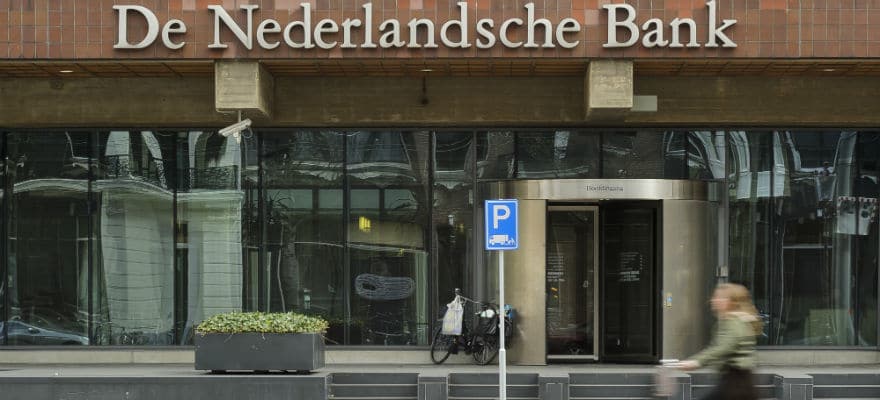In an article entitled "Bitcoin
Bitcoin
While some may still be wondering what is Bitcoin, who created Bitcoin, or how does Bitcoin work, one thing is certain: Bitcoin has changed the world.No one can remain indifferent to this revolutionary, decentralized, digital asset nor to its blockchain technology.In fact, we’ve gone a long way ever since a Florida resident Laszlo Hanyecz made BTC’s first official commercial transaction with a real company by trading 10,000 Bitcoins for 2 pizzas at his local Papa John’s.One could now argue that
While some may still be wondering what is Bitcoin, who created Bitcoin, or how does Bitcoin work, one thing is certain: Bitcoin has changed the world.No one can remain indifferent to this revolutionary, decentralized, digital asset nor to its blockchain technology.In fact, we’ve gone a long way ever since a Florida resident Laszlo Hanyecz made BTC’s first official commercial transaction with a real company by trading 10,000 Bitcoins for 2 pizzas at his local Papa John’s.One could now argue that
Read this Term's Growing Energy Problem", economist Alex de Vries claims that Bitcoin mining will account for 0.5 percent of the world's electricity demand by the end of next year.
Background
Bitcoin mining, as we have written about before, is when computers solve mathematical problems to validate transactions on the Bitcoin network. They do this because of the possibility of receiving a Bitcoin reward. There are many computers (nodes) working on every transaction, thousands even, but only one will win the prize each time.
The calculations are programmed to become more difficult as more bitcoins are released so that now only companies that can afford to set up massive rooms with hundreds of devices working on the problems can expect to make a profit.
The devices are driven by electricity. As Bitcoin becomes more valuable, more people begin mining, more Bitcoin is mined, and the calculations become harder. Thus, the amount of electricity used keeps on growing.
Estimates
de Vries bases his estimate on a number of factors.
Firstly, as of March 2018, the proportion of computer operations to accepted validations was 8.7 quintillion to one (26 quintillion/3 approved transactions per second).
These figures are not sufficient to estimate electricity usage because the machines used to mine vary from specialist machines to home computers to PlayStation game consoles. Moreover, not even the number of machines can be calculated because a node could consist of several.
What can be seen is that the most energy-efficient device on the market at the moment is the Antminer S9. de Vries uses this to calculate a minimum figure of 2.55 gigawatts - for perspective, the entire nation of Ireland uses 3.1 gigawatts.
This is a lower estimate not only because it is based on the most productive mining device, but also because it does not take into account the additional equipment required to cool mining computers, which can become as hot as room heaters as they work. This factor is particularly significant because the majority of mining takes place in centres where many machines are housed in a single room, which compounds the heat problem.
On this subject, information is either conflicting or non-existent, and de Vries cannot draw any meaningful conclusion. He told Motherboard: “Right now we're just looking at extremely limited data. There is some information available, but its [sic] often conflicting. One of the first things we should do is try to get more information about these facilities and then we can better understand them. But for now it's a black box and its [sic] really hard to get a good number out of it.”
Undeterred, he used profit calculations to arrive at an estimated figure for an upper limit of Bitcoin mining profitability.
Factoring in maintenance costs of the major Bitcoin mining operations (electricity cost, equipment purchase and upkeep, retail worth of one bitcoin), he comes to a figure of 7.57 gigawatts.
This is his estimate of how much a company would have to burn to stop being profitable; he assumes that they currently are profitable by virtue of their continued operation.
He estimates that this figure could be reached by the end of 2018. He bases this on production figures; Bitmain, a major miner and manufacturer of mining machines, he says "could" produce 6.5 million Antminer S9 devices in 2018, which together would have the ability to burn 8.92 gigawatts.
This figure exceeds the yearly demand of the nation of Austria (8.2 gigawatts), a first-world country of 8.7 million people, or to put it more sensationally, 0.5 percent of the entire world.
de Vries told Motherboard: “There are some diehards in the Bitcoin community that don’t want to talk about this because they hold Bitcoin and think it’s damaging. But overall I’m getting a lot of really positive reactions from people who are happy that I’m trying to understand this problem which is growing quite rapidly.”
In an article entitled "Bitcoin
Bitcoin
While some may still be wondering what is Bitcoin, who created Bitcoin, or how does Bitcoin work, one thing is certain: Bitcoin has changed the world.No one can remain indifferent to this revolutionary, decentralized, digital asset nor to its blockchain technology.In fact, we’ve gone a long way ever since a Florida resident Laszlo Hanyecz made BTC’s first official commercial transaction with a real company by trading 10,000 Bitcoins for 2 pizzas at his local Papa John’s.One could now argue that
While some may still be wondering what is Bitcoin, who created Bitcoin, or how does Bitcoin work, one thing is certain: Bitcoin has changed the world.No one can remain indifferent to this revolutionary, decentralized, digital asset nor to its blockchain technology.In fact, we’ve gone a long way ever since a Florida resident Laszlo Hanyecz made BTC’s first official commercial transaction with a real company by trading 10,000 Bitcoins for 2 pizzas at his local Papa John’s.One could now argue that
Read this Term's Growing Energy Problem", economist Alex de Vries claims that Bitcoin mining will account for 0.5 percent of the world's electricity demand by the end of next year.
Background
Bitcoin mining, as we have written about before, is when computers solve mathematical problems to validate transactions on the Bitcoin network. They do this because of the possibility of receiving a Bitcoin reward. There are many computers (nodes) working on every transaction, thousands even, but only one will win the prize each time.
The calculations are programmed to become more difficult as more bitcoins are released so that now only companies that can afford to set up massive rooms with hundreds of devices working on the problems can expect to make a profit.
The devices are driven by electricity. As Bitcoin becomes more valuable, more people begin mining, more Bitcoin is mined, and the calculations become harder. Thus, the amount of electricity used keeps on growing.
Estimates
de Vries bases his estimate on a number of factors.
Firstly, as of March 2018, the proportion of computer operations to accepted validations was 8.7 quintillion to one (26 quintillion/3 approved transactions per second).
These figures are not sufficient to estimate electricity usage because the machines used to mine vary from specialist machines to home computers to PlayStation game consoles. Moreover, not even the number of machines can be calculated because a node could consist of several.
What can be seen is that the most energy-efficient device on the market at the moment is the Antminer S9. de Vries uses this to calculate a minimum figure of 2.55 gigawatts - for perspective, the entire nation of Ireland uses 3.1 gigawatts.
This is a lower estimate not only because it is based on the most productive mining device, but also because it does not take into account the additional equipment required to cool mining computers, which can become as hot as room heaters as they work. This factor is particularly significant because the majority of mining takes place in centres where many machines are housed in a single room, which compounds the heat problem.
On this subject, information is either conflicting or non-existent, and de Vries cannot draw any meaningful conclusion. He told Motherboard: “Right now we're just looking at extremely limited data. There is some information available, but its [sic] often conflicting. One of the first things we should do is try to get more information about these facilities and then we can better understand them. But for now it's a black box and its [sic] really hard to get a good number out of it.”
Undeterred, he used profit calculations to arrive at an estimated figure for an upper limit of Bitcoin mining profitability.
Factoring in maintenance costs of the major Bitcoin mining operations (electricity cost, equipment purchase and upkeep, retail worth of one bitcoin), he comes to a figure of 7.57 gigawatts.
This is his estimate of how much a company would have to burn to stop being profitable; he assumes that they currently are profitable by virtue of their continued operation.
He estimates that this figure could be reached by the end of 2018. He bases this on production figures; Bitmain, a major miner and manufacturer of mining machines, he says "could" produce 6.5 million Antminer S9 devices in 2018, which together would have the ability to burn 8.92 gigawatts.
This figure exceeds the yearly demand of the nation of Austria (8.2 gigawatts), a first-world country of 8.7 million people, or to put it more sensationally, 0.5 percent of the entire world.
de Vries told Motherboard: “There are some diehards in the Bitcoin community that don’t want to talk about this because they hold Bitcoin and think it’s damaging. But overall I’m getting a lot of really positive reactions from people who are happy that I’m trying to understand this problem which is growing quite rapidly.”






















